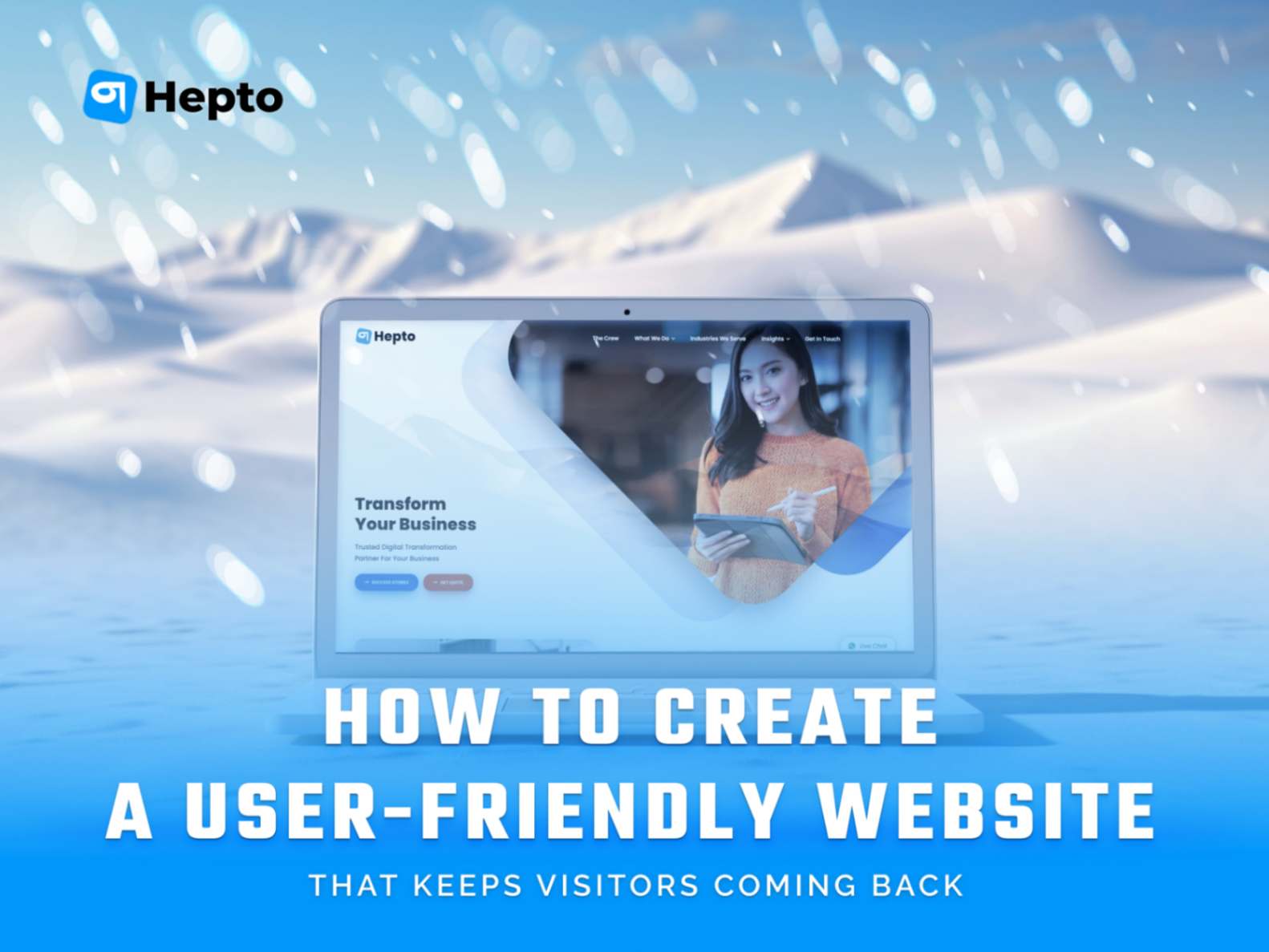How to Create a User-Friendly Website That Keeps Visitors Coming Back
A website must be easy to use to attract and retain visitors. A well-designed website ensures client loyalty, boosts engagement, and enhances the user experience. We will look at the best practices for website design here to create a visually attractive platform that is also useful and efficient.
What is a user-friendly website?
A user-friendly website is easy to use, navigate, and understand. It provides visitors with a smooth and enjoyable experience, making it simple for them to find what they need, engage with the content, and complete their goals (like reading an article, making a purchase, or contacting a business).
Here are the key features of a user-friendly website
- Simple Navigation: Menus and links are well-organized.
- Mobile-Friendly Design: The site works perfectly on all devices.
- Fast Loading Speed: Pages load quickly without keeping visitors from waiting.
- Clear Layout: The design is clean and uncluttered, with enough white space and readable fonts.
- Relevant Content: The text is easy to read and engaging.
- Accessible to All: The website considers its visitors by including features like suitable contrast for text and alt text for photos.
- Interactive Features: Forms, buttons, and links are easy to use and functional.
1. Make It Easy to Use
Your website should be easy to navigate, and people should not be confused while trying to find what they are looking for.
- Make use of menus that are easy to navigate and clear.
- Don't overflow; keep everything organized and well.
- Make important sections stand out by highlighting them.
Users prefer to spend time on websites that are easy to use.
2. Simple Navigation
Think of your website like a map. If it’s hard to read, people will give up. Website navigation should guide visitors step by step:
- Use easy-to-read menus at the top of the page.
- Add links or buttons to help people move around.
- Ensure that critical information can be found without requiring a lot of clicks.
Good navigation means happy visitors who stay longer.
3. Work on Mobile Friendliness
Most people use their phones to browse websites, so your site should work perfectly on smaller screens. Here's how:
- Make use of designs that adapt to any device.
- Make links and buttons large enough for a phone's touch screen.
- Avoid anything outdated like Flash that doesn’t work on mobiles.
A mobile-friendly design makes your website easy for everyone to use anywhere.
4. Make It Load Quickly
Waiting is annoying, primarily online! A slow website can drive visitors away immediately. To speed things up,
- Compress photos to make them load more quickly.
- I am making use of a quality hosting service.
- Minimizing unnecessary content and maintaining a simple website.
Websites that load faster keep users satisfied and return for more.
5. Keep It Simple and Clean
A messy website with too many colours, fonts, or pictures can confuse visitors. Create an easy website layout by:
- Using a lot of white space to make things look neat.
- Keeping everything in a precise order.
- Using simple fonts and a few matching colours.
A clean website is easier to use and looks more professional.
6. Add Interesting Content
What you say on your website matters! Engaging web content keeps people interested. Here’s how to do it:
- Write clearly and.
- Break up long text with headings and pictures.
- Update your content regularly to keep it fresh.
If your website is helpful or fun to read, people will want to visit again.
7. Make It Easy to Find on Google
What’s the point of a great website if no one can find it? A good SEO-friendly website helps you rank higher on search engines. To do this:
- Use simple words and phrases people search for, like “user-friendly websites” or “mobile-friendly design.”
- Add short, clear titles to your pages.
- Include links to other useful websites or pages.
Better visibility means more people visiting your site!
8. Always Test and Improve
Once your website is live, the work doesn’t stop! Test it often to make sure everything works perfectly:
- Check for broken links or missing pictures.
- Ask friends or family to try using the site and give feedback.
- Update your site regularly to keep it fresh and functional.
Minor improvements can make a big difference.
Bottom Line
Making a user-friendly website doesn’t have to be complicated. Start with quick loading times, a clear layout, and easy navigation. Create content people would like and make it mobile-friendly so everyone can use it. Lastly, use SEO-friendly techniques to make it simple to find on Google.
A user-friendly and engaging website will keep visitors coming back for more. Start building your site today, and watch your visitors grow!
Are you looking to create a user-friendly website that stands above the rest? Partner with Hepto Technologies, the best web development company in the USA, to bring your vision to life. We have expertise in developing innovative websites that are easy to use, secure, visually appealing, and search engine optimized. If you also want to build a User-Friendly website and are unsure how to begin the process, schedule your appointment or book your consultation today.
